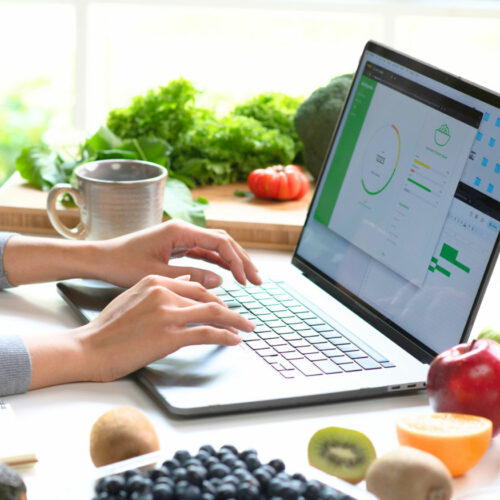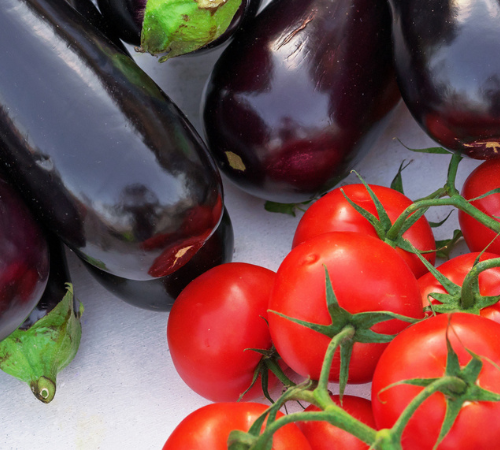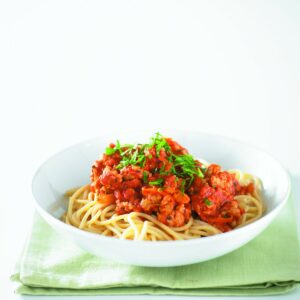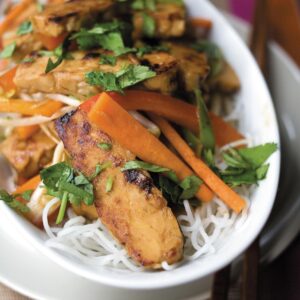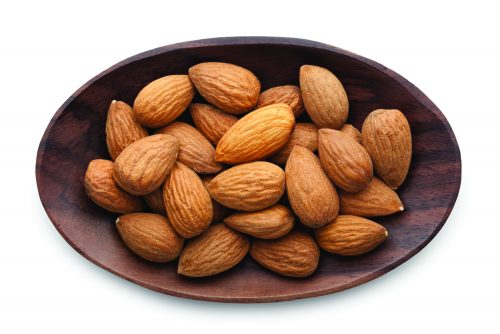
For people with coeliac disease going gluten free is a necessity; for the gluten intolerant it can help ease discomfort; but going gluten free is not advised for others. Getting enough fibre from a gluten-free diet can be challenging. Alana Scott takes a closer look.
What are the risks of going gluten free?
A gluten-free diet isn’t necessarily a healthy diet. Strictly gluten-free diets can be lacking in fibre, calcium, iron and B vitamins. The gluten-free flours used to make gluten-free bread, pasta and baked goods can be highly refined and low in fibre, with a high glycaemic index (GI). These flours lack texture and taste and so some gluten-free products can contain added fat and sugar to compensate.
How important is fibre?
We know that fibre helps to ‘keep us regular’, but it can also protect against bowel cancer and heart disease, lower blood cholesterol and improve blood glucose control. Processed gluten-free products, though, can lack fibre.
Fibre is especially important for healthy bowel function. Soluble fibre acts like a sponge by absorbing liquid and easing bowel movements. This can slow the digestion of food, help to manage diarrhoea and promote good gut health. Insoluble fibre acts as a ‘bulking agent’ and, combined with soluble fibre, also helps to reduce constipation.
How much fibre do I need on a gluten-free diet?
For good health, it’s recommended women get 28g of fibre each day and men 38g. An adequate intake of fibre is considered to be 25g for women and 30g for men, but many of us don’t even get that much.
How can I boost my fibre intake if I’m not eating wheat, rye or barley?
Here are five easy ways to boost your fibre intake:
- Aim to eat at least five serves of vegetables and fruit per day. Leave the skins on as they are high in insoluble fibre.
- Sprinkle chia seeds or flaxseeds on top of gluten-free porridge, muesli, yoghurt or muffins.
- Add chickpeas, lentils or beans to soups and casseroles.
- Choose wholegrains and wholegrain products whenever possible.
- For a high-energy, high-fibre snack, eat a handful of nuts, seeds or dried fruit.
How do I find wholegrains?
Higher in fibre, vitamins and minerals, wholegrains are the healthiest type of grain. These grains haven’t been refined, so their bran (grain husk) or germ (reproductive system) hasn’t been removed.
To identify wholegrains you need to:
- Look for products where the main ingredient is a wholegrain, such as wholegrain corn, or brown rice. This information should be found at the top of the list of ingredients.
- Keep in mind that the terms ‘brown’ or ‘multigrain’ do not always mean that the product is made from wholegrains.
- Look for the word ‘whole’ next to the grain in the ingredients list.
Which wholegrains are gluten free?
A range of gluten-free wholegrains can be used instead of wheat, rye, barley and oats:
Brown rice is an easy way to increase your consumption of wholegrains. Simply swap white rice for brown rice in your favourite recipes.
Amaranth is about the size of a poppy seed and has a slightly peppery taste. It is great in soups and stews, or you can ‘pop’ it like corn and use it in muesli bars.
Buckwheat is a fruit seed related to rhubarb, and is not wheat as its name suggests. It has a slightly earthy taste and makes a great stuffing for red capsicums.
Millet is a similar size to mustard seed and has a very mild flavour. My favourite way to enjoy millet is as ‘porridge’ topped with cinnamon, shredded coconut, strawberries and banana.
Quinoa is a crunchy nutty seed which is great in cold summer salads (make sure you rinse it well so it doesn’t taste bitter).
Teff is the smallest of grains with a nutty and slightly earthy flavour. You can use cooked teff in soups, or as an alternative to polenta.
Gluten-free fibre sources
| FOOD | FIBRE |
| dried apricots (4 halves) | 1.3g |
| ground flaxseeds (7g/1 tablespoon) | 1.9g |
| 20 almonds (25g) | 2.1g |
| 1 orange | 2.6g |
| brown rice, cooked (3/4 cup) | 2.8g |
| quinoa, cooked (1 cup) | 4.1g |
| large jacket potato with skin (200g) | 4.4g |
| chia seeds (1 tablespoon) | 4.5g |
| green peas (1/2 cup) | 4.8g |
| 1/2 can lentils in spring water, drained (125g) | 6.6g |
Add fibre to your day
Breakfast ideas
Cocoa and chia seed breakfast bowl with blueberries – 16.1g fibre
2 tablespoons chia seeds (9g) and 2 teaspoons of cocoa powder (1.5g) mixed with milk and served with a cup of blueberries (5.6g)
Millet porridge with cinnamon – 13.2g fibre
Use 1/2 cup uncooked millet per person to add 9g fibre, 1/3 tsp cinnamon (0.5g), 1 tablespoon dried coconut (0.6g), 1/2 banana (1g) and 1/2 cup raspberries (2.1g).
Snack ideas
Handful of nuts and dried fruit
12 almonds and 4 apricot halves – 2.5g fibre
3 Brazil nuts and 2 dried figs – 5.2g fibre
Serve of fruit
1 Red delicious apple, skin on – 2.9g fibre
1 Packham pear, skin on – 4.9g fibre
Yoghurt sprinkle – there’s no fibre in yoghurt, but add:
1 tablespoon whole flaxseeds – 2.8g fibre
1 tablespoon ground flaxseeds – 1.9g fibre
1 tablespoon ground LSA – 1.5g fibre
Lunch and dinner ideas
Add fibre with whole grains, veges and legumes:
- Quinoa salad with roast veges
- Carrot and corn fitters (using gluten-free flour)
- Chicken salad sprinkled with roasted chickpeas
- Lime and sesame beef stir-fry with brown rice
- Lamb stew with chickpeas, lentils or beans
Article sources and references
- Coeliac UK. 2015. Fibre and wholegrains. www.coeliac.org.uk Accessed November 2015https://www.coeliac.org.uk/gluten-free-diet-and-lifestyle/recipe-database/fibre-and-wholegrains/
- Dietitians of Canada. 2013. Food sources of soluble fibre. Dietitians of Canada. www.dietitians.ca Accessed November 2015https://www.dietitians.ca/Your-Health/Nutrition-A-Z/Fibre.aspx
- Mayo Clinic. Whole grains: Hearty options for a healthy diet. www.mayoclinic.org Accessed November 2015https://www.mayoclinic.org/healthy-lifestyle/nutrition-and-healthy-eating/in-depth/whole-grains/art-20047826
- New Zealand Nutrition Foundation. www.nutritionfoundation.org.nz Accessed November 2015https://nutritionfoundation.org.nz/
- Nutrition Australia. www.nutritionaustralia.org Accessed November 2015http://www.nutritionaustralia.org/
- Palmer S. 2007. Putting the healthy into gluten-free. Today’s Dietitian 9:40https://www.todaysdietitian.com/
www.healthyfood.com



